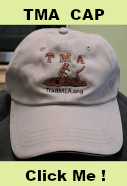Acually, non-magnetic then quench only works for hypoeutectoid simple steels, and even then more heat will do a much better job. steels having .80/.85 carbon are called eutectoid steels. The eutectoid point in steel means that is the point at which steel will not accept any more carbon into an homogenized solution when heated to quench temp. Hypo means less than that much carbon. Hypoeutectoid, and eutectoid simple steels go into full solution quickly, but to fully solutionize, need 50° to 75° higher heat than just non-magnetic. Non-magnetic is the Curie point, which is 1414°. A heat of not less than 1475° is recommended to get a fully dissolved solution of iron and carbon, in a reasonable amount of time. A magnet can be used to tell you when you reach the point at which you need to increase your heat one or two brighter shades of red, but is not an indicator of when to quench. Only a marker that tells you, you have reached 1414°. An example of another way to look at it this, is this. You have a blade of 1080 steel. 80 means .80 carbon. You quench at non-magnetic, your carbon is not fully dissolved, you have reduced your 1080 steel to maybe 1060 steel in useful carbon. The undissolved carbon is in tiny groups scattered about in no particular order, and practically useless to the steel. By increasing the heat you will increase your carbon solution. If you can hold your heat at around 1475° to 1500° for a minute, or two, you will have a fully dissolved carbon/iron solution, and get the max performance from your steel when tempered. "Hyper" eutectoid simple steel is treated in the same manner, same heat range, but now you have extra carbon that will not go into solution. This extra carbon needs another minute or so at temp in order to disperse in an even manner, or it too will form into tiny groups causing tiny hard spots, and a weaker structure. This extra carbon, when evenly dispersed, is what gives the steel it's higher degree of abrasion resistance, when compared to a "hypo" or a eutectoid simple steel. The draw back to the "hyper" eutectoid simple steel is that most of it is low in manganese, which helps to slow the steels natural transition back to pre-solution condition, when the heat is removed. This is why 1095 requires a very fast quench medium in order to lock that solution in place, before any transition has time to begin. A final couple of notes. We, or most of us, use the file test to see if we got our blade hard. Unfortunately, the file can only tell us that the steel is harder than 58 on the Rockwell scale. A common file stops cutting after 58/59 RC, when we need full hardness at about 64, to 65 RC. Short of buying a Rockwell tester, which is quite expensive, or special testing files, cheaper, but still more than many would care to pay, we just need to do our best to do the best quench that we can, for a given steel. One last note on HT. Normalizing the steel before quench is very important to the final out come. This is a process of stress relieving, and preparing the steel structure to go into solution easier, and better, and will reduce the grain size, thus giving the finished blade more strength. ESPECIALLY after forging. Forging, and even just grinding puts stresses in the steel which will cause warp in the quench, and in the case of forging, the grain structure is in total chaos. After forging, the blade should be annealed, then also thermo-cycled. There are different variations of this for different steels, but for hypoeutectoid steels the common method is to bring the steel to non-magnetic heat, then let air cool to room temp three times. Hypereutectoid steels are brought up to around 1550° quickly, then cooled to room temp. Then three heats under non-magnetic, between 1000° and 1300°, and air cooled to room temp in between. The first high heat disperses the carbon, the three low heats cause the carbon to form tiny spheres which will go into solution faster, and better, and all these heats combined are de-stressing the steel, while also reducing grain size to as small as it will go. No! Forging does not reduce grain size, or improve steel in any way. Only heat can change the internal struture, for the good anyway. Forging is acually the worst thing that can be done to the steel structure, other than burning it, UNTIL it is brought back to it's original structure by heat. Anything done to the steel by the hammer, is nullified by heat, so you that just want to grind a blade, and not forge it, can make a knife that is every bit as good as one that was forged, as long as you get your heat treat well done.




